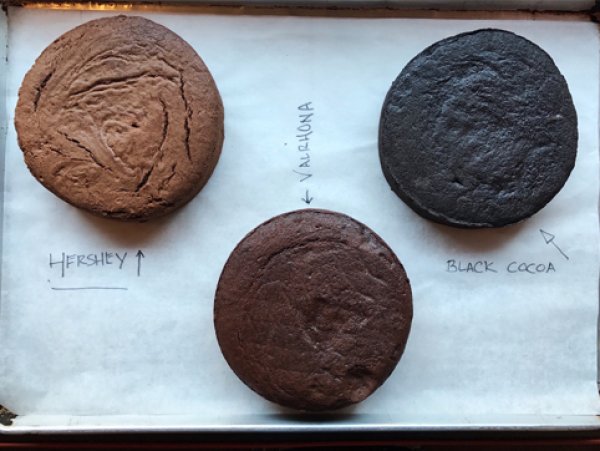When it comes to baking, not all cocoa powders are created equal. The type you choose can dramatically change the flavour, colour, and even the chemistry of your cakes, cookies, and frostings. Most bakers are familiar with natural cocoa and Dutch-processed cocoa, but there’s a third variety that’s been taking the baking world by storm: black cocoa powder.

Understanding the differences of the types of cocoa isn’t just trivial, it’s the key to mastering recipes and avoiding flat cakes or off flavours. Below we break down what sets them apart and how to use each one to your advantage when baking & cake decorating.
Natural cocoa powder is the most traditional form of cocoa, made by roasting cocoa beans, grinding them, and removing most of the cocoa butter. Unlike Dutch or black cocoa, it is not treated with an alkalizing agent, which means it retains its natural acidity. This gives it a lighter brown colour and a sharper, fruitier, more bitter flavour that many bakers describe as “pure chocolate.”
Because of its acidity, natural cocoa plays a unique role in baking chemistry. When combined with baking soda, the acid-base reaction helps baked goods rise, creating a light and tender crumb. This is why many classic recipes, like old-fashioned chocolate cake or red velvet, specifically call for natural cocoa

Dutch-processed cocoa, often simply called Dutch cocoa, is cocoa powder that has been treated with an alkalizing agent and neutralizes the cocoa’s natural acidity. The result is a powder that is darker in colour, smoother in flavour, and less bitter than natural cocoa.
Because it’s less acidic, Dutch cocoa does not react with baking soda the way natural cocoa does. Instead, it pairs best with baking powder or recipes that don’t rely on chemical leavening at all. Its mellow, rounded chocolate taste makes it a favourite for bakers who want depth without sharpness.
You can thank a guy called Coenraad J. van Houten for Dutch Cocoa. Back in 1828 he developed an affordable way to extract cocoa butter from cocoa beans and then treated the cocoa powder with a potassium or sodium carbonate solution.
This process does a couple of things to the cocoa powder. Firstly, it neutralises the acid making the cocoa powder ‘alkalised’, making the cocoa powder taste more earthy, more chocolatey, and less acidic. Another effect of alkalization is that the resulting cocoa powder may be slightly more soluble.
It also darkens the natural pigments in the cacao beans, called anthocyanins, which are lighter in an acidic environment and darker in an alkaline one. So the more alkalised the cocoa powder the darker it is, this is why Black Cocoa Powder is sometimes referred to as super-dutched, its spent more time soaking in that potassium/sodium carbonate solution and has become more alkalised.
Black cocoa powder is the most intensely processed form of cocoa, often described as “super-Dutched.” Like Dutch cocoa, it is treated with an alkalizing agent, but to a much greater degree. This heavy alkalization strips away nearly all acidity and much of the cocoa butter, leaving behind a powder that is jet black in colour, low in fat, and mild in flavour.
Its striking appearance makes it a favourite for bakers who want bold visuals without relying on artificial food colouring. However, because it has less fat and a more muted chocolate taste, it’s rarely used on its own. Instead, it’s often blended with Dutch cocoa to balance flavour and texture.
With Black Cocoa you can’t just swap it out directly for Natural Cocoa Powder. In fact you shouldn’t even do this with standard Dutch Cocoa Powder. Here are a few helpful tips to remember when baking with the different types of cocoa powder:
Black Cocoa Powder is alkaline so it won’t react with baking soda, neither will Dutch Cocoa Powder. If your recipe uses baking soda stick with Natural Cocoa Powder.
However, if your recipe only uses baking powder, which has acid needed for rising, or if it doesn’t include any leavening ingredient at all, you can use any type of cocoa powder including Black Cocoa Powder.
If the recipe uses both baking soda and baking powder, but more soda than powder, use Natural Cocoa Powder.
If it has more baking powder than soda though, you can use Dutch or Black Cocoa Powder.
Because Black Cocoa Powder is processed to have almost no fat, we recommend using a ratio of 2/3 of our Premium Dutch Cocoa and 1/3 Black Cocoa Powder, to keep your cake moist.
Checkout our other articles & videos to master the art of baking & cake decorating with chocolate.